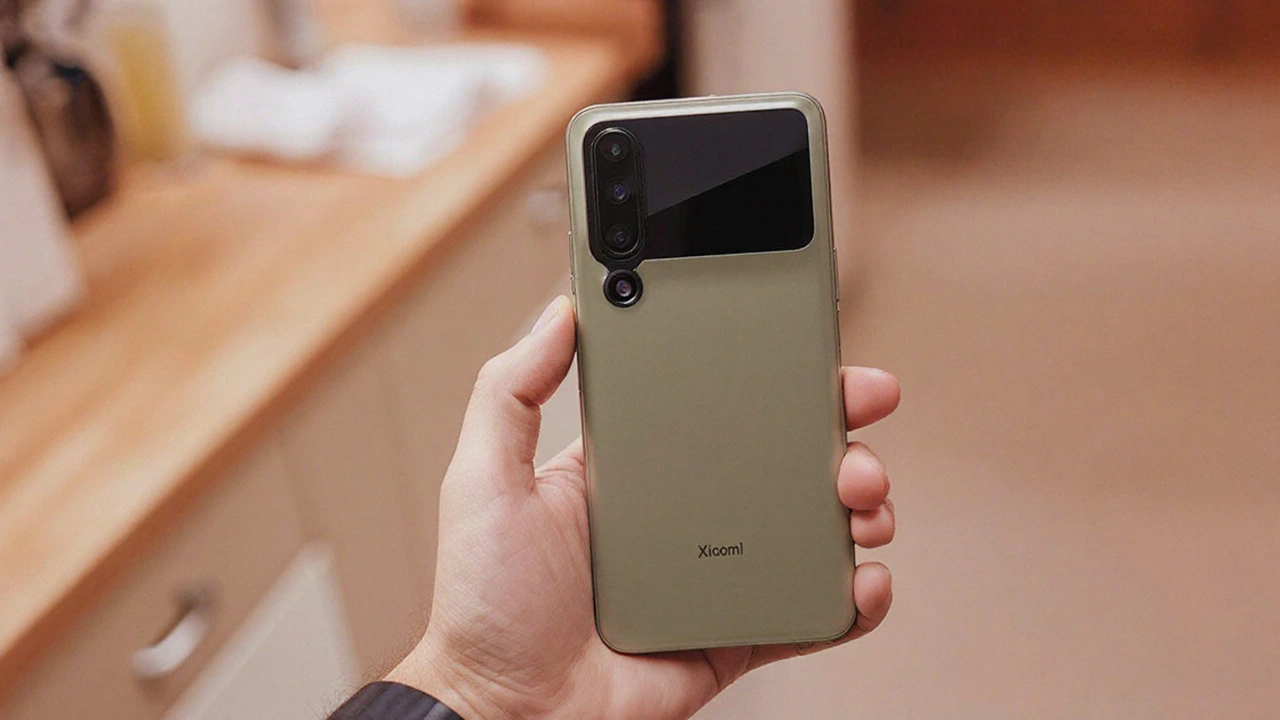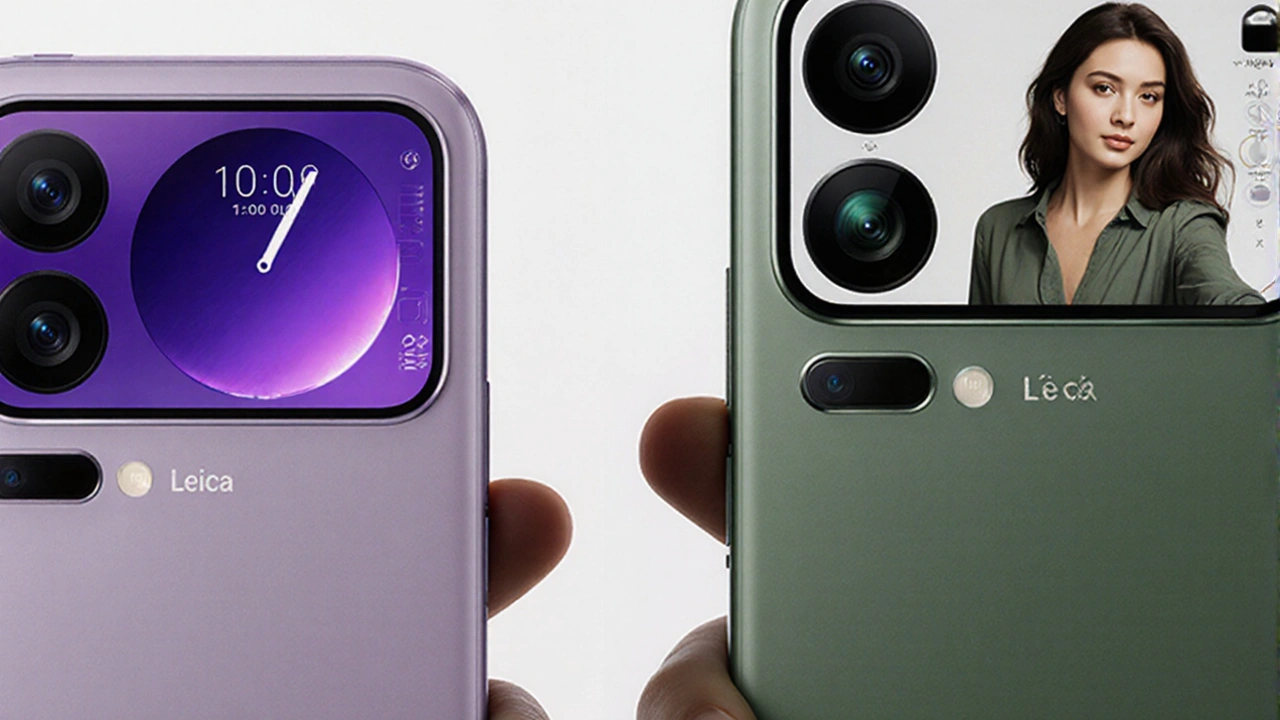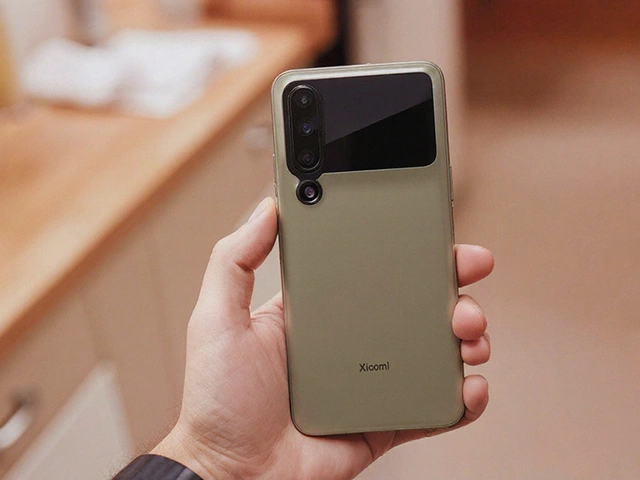
Why the rear screen matters
When Xiaomi announced the 17 Pro Max, the headline was unmistakable: a second display on the back of the phone, not just a tiny badge or notification strip. At 2.9 inches, the rear AMOLED panel is almost a third of the size of the primary 6.9‑inch front screen, and it carries the same high‑end specs. We’re talking about peak brightness that can hit 3,500 nits, a refresh rate that flexes between 1 Hz and 120 Hz, and full‑touch capability that behaves exactly like the main display.
What makes this more than a gimmick is the attention to durability. Both screens arrive pre‑treated with a protective glass layer, meaning users won’t have to worry about scratching the back panel when they set the phone on a table. The rear glass uses the same proprietary material as the front, so the feel is uniform – you don’t get that cheap, flimsy impression you sometimes see on novelty dual‑screen phones.
The resolution of the back panel—976 × 596 pixels—delivers clear, crisp visuals without demanding excessive power. Combined with DC dimming, the screen can stay comfortable for eyes in low‑light environments, a feature that’s often overlooked on secondary displays.

Real‑world uses and market impact
From a practical standpoint, the extra screen opens up several scenarios that were previously clumsy or required third‑party apps. For photographers, the rear display can act as a live viewfinder when shooting with the primary cameras. Imagine framing a group selfie while the phone’s main lenses capture the shot—no need to tilt the device or rely on the front camera’s limited field of view.
Gamers stand to benefit the most. With a dedicated 2.9‑inch panel, developers could offload maps, chats, inventory screens, or streaming controls to the back while the main screen runs the game itself. It’s a setup that feels reminiscent of handheld consoles like the Nintendo Switch, but in a pocket‑sized form factor.
Productivity‑focused users can also turn the dual‑screen layout into a mini‑multitasking hub. One could have a messaging app, a Discord channel, or a quick‑note interface on the rear while browsing or working on the front display. The fluid variable refresh rates mean the secondary screen can stay at a low 1 Hz when showing static info, conserving battery.
Speaking of power, Xiaomi pairs the dual‑screen hardware with the Qualcomm Snapdragon 8 Elite Gen 5 processor. This chip is built for heavy graphics workloads and AI‑enhanced tasks, ensuring the phone can handle two active displays without jitter. The battery architecture backs this up: a massive 7,500 mAh cell, laid out in an L‑shaped stacked format, squeezes more silicon density into a relatively thin chassis.
Charging speeds are aggressive, too. Users can top up the phone in minutes thanks to 100 W wired charging, while 50 W wireless charging and a 100 W PPS universal protocol give flexibility for different charging stations. In everyday use, the dual screens and high‑end chipset would typically drain the battery faster than a single‑screen flagship, but the large capacity and efficient silicon aim to keep the phone alive through a full day of intensive use.
From an industry angle, the 17 Pro Max arrives at a moment when mobile gaming, emulation, and content creation are surging. The Nintendo DS, for example, sold over 150 million units by leveraging two screens for unique gameplay experiences. Xiaomi’s approach feels less like a stunt and more like an evolution—an attempt to bring that dual‑screen concept into the modern smartphone era where high‑resolution, high‑brightness panels are the norm.
The device is slated for a global rollout toward the end of 2025 or early 2026, with the possibility of an unveiling at CES 2026. If the market embraces the functionality, we could see a ripple effect where other manufacturers explore rear‑screen options, not just as novelty but as a genuine productivity and entertainment tool.
Whether the rear panel becomes a staple or remains a niche feature will depend on how developers tap into the extra real‑estate and how consumers balance the added utility against potential concerns like durability, cost, and software optimization. One thing’s clear: Xiaomi has set a high bar for what a dual‑screen smartphone can look like, and the conversation about mobile design is about to get a lot more interesting.






Another pointless gimmick from Xiaomi they think a rear screen solves everything.
Hey, I get why some folks are skeptical 😊 but the extra screen could actually make multitasking smoother and give creators more flexibility. It’s not just hype, there are real use‑cases like quick note‑taking or keeping a map on the back while gaming. Let’s give it a chance before writing it off.
One cannot help but marvel at the audacity of Xiaomi’s latest venture, for it does not merely add another pane of glass to an already saturated market but rather redefines the very notion of what a smartphone can be. The rear AMOLED, spanning a generous 2.9 inches, is not a gimmick; it is a bold statement that challenges the monopoly of front‑facing displays that have hitherto dominated our visual interactions. Imagine, if you will, a photographer framing a shot with the primary lenses while simultaneously using the back screen as a live viewfinder, eliminating the awkward contortions that have plagued mobile shooters for years. Gamers, too, stand on the precipice of a new frontier: maps, inventory, and chat windows could reside discreetly on the rear panel, freeing the primary screen for immersive graphics and fluid gameplay. Productivity enthusiasts might find a sanctuary in the ability to keep a Discord channel or quick‑note widget perpetually visible, all while drafting emails or browsing the web on the front. The variable refresh rate, ranging from a whispering 1 Hz for static information to a dazzling 120 Hz for active content, ensures that power consumption is judiciously managed, a testament to engineering finesse. Coupled with the Snapdragon 8 Elite Gen 5, the device promises to juggle two displays without a hint of lag, while the massive 7,500 mAh battery and 100 W charging ecosystem provide the stamina required for marathon sessions. Yet, beyond the technical marvels, what truly captivates is the cultural shift this heralds – a move away from monolithic single‑screen experiences toward a more modular, adaptable paradigm. History whispers of the Nintendo DS, whose dual‑screen design once seemed novelties but ultimately reshaped handheld gaming; Xiaomi may be poised to script a similar saga for smartphones. Should developers rise to the occasion, exploiting the rear real‑estate with innovative applications, the market could witness a cascade of competitors emulating this design ethos. Conversely, if software support remains tepid, the rear screen risks becoming an expensive ornament, a lesson in the perils of hardware without harmonious integration. In any case, the conversation about mobile design has been irrevocably altered, and the coming months will reveal whether this rear canvas becomes a mainstream staple or a fleeting curiosity.
While the prose extols innovation, one must consider the hidden machinations behind such a device. The rear screen ostensibly offers convenience, yet it also furnishes manufacturers with an additional avenue for data collection, telemetry, and eventual behavioral manipulation. By encouraging users to split their attention between two displays, the device subtly increases screen‑time, feeding the insatiable appetite of advertising ecosystems. Moreover, the touted durability is a veneer; any additional glass surface translates to a higher likelihood of shattering under stress, forcing consumers into costly repairs or replacements – a revenue stream for repair monopolies. In a world where privacy is already eroded, this dual‑screen architecture merely amplifies the surveillance state cloaked in technological progress.
India needs home‑grown tech, not imported gimmicks.